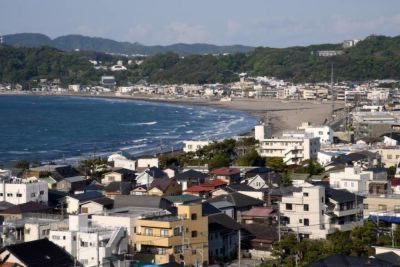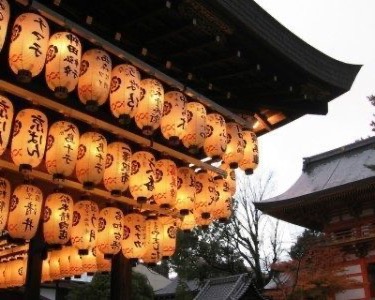A mini guide of Kyoto, what to do in Kansai for three days, where to sleep and where to eat, what to see and what excursions to do, all low cost.
After having visited Kyoto in winter I thought about how incredibly wonderful it could be in spring. I loved Kyoto, especially compared to Tokyo, but let's say they are two very different cities. In Kyoto you can really find the soul of Japan, the one made of low wooden houses, the one in which meow and geishas walk through the alleys of the Gion and stop to admire a cat on the street.

Organize a trip to Japan and not enter the beautiful cities of Kyoto, by the way ancient capital of the country, it is more than a sacrilege. In this mini guide I want to explain how I moved, which areas I visited and what I didn't miss. Also from here there are excursions that I did and that I really advise you not to miss, in any season of the year. Let's begin!

Where to sleep in Kyoto
As I told you in the Tokyo mini guide, I was in Japan over Christmas and New Years and the prices weren't very low. So, while looking on booking for Tokyo I managed to find something nice at an acceptable price, a Kyoto I went to Japanese sites, not always easy to understand to be honest. The Japanese booking sites always have an intermediary, they make you send the request by email (or fax) and only the next day they answer you if they have room or not and at what price. I eventually took three nights at the Ryokan Capsule Hotel.

The hotel was not a capsule hotel, but a ryokan, therefore a typical structure with i futon beds, but hostel style with a shared kitchen and a large lounge with sofas. Reading the reviews on TripAdvisor I was convinced and I booked and I spent 203 € for three nights for two people, so little more than 100 € each for three nights, not bad.

La location is very good, 10 minutes walk from Kyoto Station, le super small rooms complete with a shower in the room (if you are not intimate with your travel companion I do not recommend it as accommodation), the guys at the hotel spoke perfectly Japanese and the Wireless he came to his room and was free. At our check out they also gave us two Japanese chopsticks for our next meals!

What to see in Kyoto
There is so much to see in Kyoto, both in the historic city center and outside the city. First of all, be sure to take a tour of the train station where you will arrive. No, the stations are not like us, small, dark and cold, here the stations are almost cities. Cities within cities. Kyoto station has everything inside, about ten floors with restaurants and bars on the top floor, shops, clothes chains on the ground floor and there is also the Tourist Board on the first floor. The architecture of this structure is phenomenal, the station is one of the largest in Japan. In front of the station is the Kyoto Tower, even if I have to be honest, I didn't go up there.


What you must not miss in Kyoto is the Nishiki Market, an entire district transformed into a market where you will find all kinds of Japanese vegetables, fruit and fish, but not only. A very long street with stalls to the right and left where you will lose yourself among the scents and smells of local spices. From via Teramachi to via Takakura for 390 meters there are about 150 shops that offer local street food as well as products to sell. Here there really is something for everyone.

If you are not traveling during the New Year period, be careful not to miss the Nijo Castle, they say it's worth it. Take a tour of the center of Kyoto and visit the malls and shops, especially in Shijo-Kawaramachi, which is the name given to the intersection of Shijo Street and Kawaramachi Street, especially go to the supermarket part of these establishments. Here, in fact, everything is sold, but everything seriously. For eat low cost the advice I give you is to go to these supermarkets around 18 pm. All the fish of the day and the prepared sushi are discounted. You will notice a little man walking by the sushi counters and changing the price of the products to sell them off. Obviously the fish remains very fresh, but it will cost you half as much.

If you are a smoker, be careful because in Japan there is practically no smoking anywhere. In Kyoto, in the city center, there are only three smoking areas. In the remaining areas of the city smoking is prohibited and the fines are very high.

Gion, Pontochō and the Geishas
The symbolic district of Kyoto is without a doubt Gion. While modernity has brought many different things to this neighborhood than traditional ones, there are still some corners that are worth visiting to try to find the antiquity of Japan. Here if you are careful and lucky you can find and see the geisha or the miao, the aspiring geisha who knows this differs in hairstyle and clothing, but also in attitude they say.

Hanami-koji it is the main street of the neighborhood, an area full of tea houses and traditional restaurants, dating back to the XNUMXth century. Shinbashi instead it is one of the most beautiful streets in Kyoto, especially in the evening and during the cherry blossom, but even in winter I assure you that it was not bad at all.

Don't forget then Pontochō, on the opposite side of Gion, a long road overlooking the river and where you can really be lucky enough to meet some geisha. In the evening it is beautiful and I highly recommend it.

Excursions from Kyoto
Kyoto is also often used as a support city to make some excursions to Japan. Some take barely 20 minutes, more than excursions it is better to call them small trips, others take an hour to travel. I preferred to group all these excursions into one day. It was definitely tiring, but it allowed me to optimize the times and see everything there was to see outside Kyoto in one day (I dedicated half a day to Fushimi-Inari Taisha only) and to dedicate myself to the city in the other two days.

Fushimi-Inari Taisha shrine
One of the symbolic images of Kyoto all over the world are certainly the orange torii of this sanctuary. The sanctuary is located in 15 minutes from Kyoto station and can be reached either by train or by bus. The Shinto shrine is not only besieged by tourists, especially on holidays and on beautiful sunny days, but also by the Japanese themselves. Almost 4 kilometers of very compelling and fascinating stairways.

Going up you notice that there are many foxes holding a key in their mouth. The temple is in fact dedicated to Inari who was the god of wheat, therefore of prosperity, and his messenger was the fox, who is represented here with a key in his mouth. A curiosity that few know, is that while going up the torii are orange without writing, going down the stairs and coming back the torii are full of Japanese writings. They are the names of companies and individuals who have made donations to the temple, hoping that economic abundance and prosperity will come to them too.
If you want to take the classic photos here near the torii, arm yourself with patience and get in line.

Golden Pavilion
Il Kinkaku-ji Temple, or Golden Pavilion, was originally the villa of a general of the Muromachi period and was transformed into a temple only on his death. The pavilion, covered with gold leaves, is one of the most beautiful, famous and crowded temples in Japan. In the photo you can see the beautiful entrance tickets in addition to the pavilion. To get there, take thebus 205 from Kyoto station and get off at Shinkaku-ji-michi stop.

Zen garden
Inside the Ryoan-ji Temple, there is the beautiful Zen garden, the most famous of the Japanese gardens, even registered in the World Heritage. In three hundred meters of gravel lie 15 stones but from whatever point you look at them there are always and only 14.zen exercise, they say, is to be able to see 15 even standing still. You can get there by taking the same bus as the Golden Pavilion and getting off at the Ryoanji-michi stop. Again you pay for the ticket, but the price is approx 500 yen.

Bamboo Forest
One of the most beautiful and exciting things seen on excursions around Kyoto is undoubtedly there bamboo forest. Even if the journey is not very long and even if it takes a while to get there, I recommend this visit for the beauty of nature. Being inside a wood like this, puts you at peace with the world.

You can get there from Kyoto station if you want to see this first, or by changing buses from previous attractions and it takes about 40 minutes by bus. Just remember that temples close at approximately 17-18pm and that the bamboo forest is dark at night.

Getting around Kyoto
In my opinion, the center of Kyoto can also be explored on foot. However, it took about 40 minutes to walk from my hotel to Gion. If you do it the first day, because maybe you want to walk after several hours on the plane, that's fine, but maybe the following days you also want to take some means.
I personally recommend you to take buses to Kyoto. While in Tokyo the subways are the best way, but also the local trains because the city is big and chaotic, in Kyoto you can opt for a more relaxed way to enjoy the landscape a bit too.

On Kyoto buses, you get on from behind and get off from the front. Go up, you will pay only when you get off and try to have the money in currency, the race comes 230 yen. I had made a pass for two days for the cost of 2000 yen, a little expensive perhaps, but if you think that with this I have also done all the excursions, I would say that it is worthwhile.
Finally, consider that to take a bus, like any means in Japan, you will have to respect the lines. This photo above is for you to see how the rows are indicated, and I recommend in single file :)


























